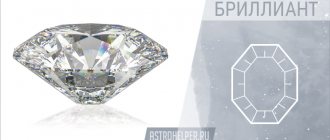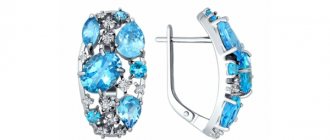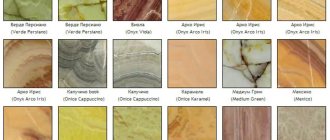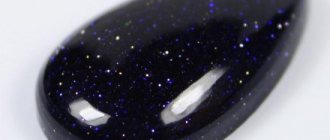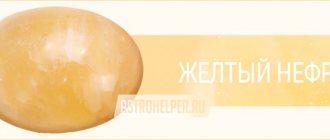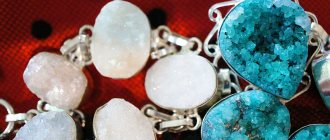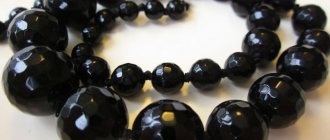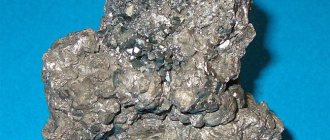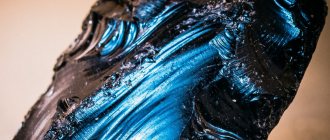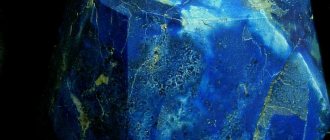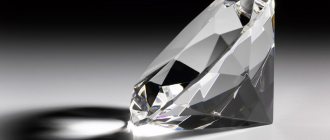Diamond has been known to mankind for a very long time (more than three billion years). Why is he so famous? This stone has always been in great demand. It is known for its durability, extraordinary shine and is used to make jewelry that has a very high value. It is no coincidence that scientists around the world have long been working on creating artificial diamonds that are as similar as possible to the original and even surpass it in certain parameters.
Today, the creation of artificial diamonds has become a successful business that satisfies the demand for this mineral.
From the history of artificial diamonds
Natural diamonds can be found on all continents of the globe, but man-made diamonds were created not so long ago.
The possibility of obtaining a synthetic diamond was first discussed in 1797, when they came to a conclusion about the carbon composition of the mineral. At the end of the 19th century, chemists from Scotland and France tried to obtain diamonds from carbon, matte black graphite.
At the beginning of the 20th century, the English scientist William Crookes conducted a similar experiment, and in 1926 the first artificial diamond was created, but such a stone could not be put into production due to its characteristics. Now it is on display as an exhibit in the Museum of the United States of America (in Kansas).
A little later (in the thirties of the twentieth century), our physicists made all the necessary calculations to obtain a diamond, but they were tested in practice by the American scientist Tracy Hall, who used a high-pressure apparatus that turned graphite into a diamond. This significant event occurred in December 1954.
Jewelers warn: Moscow diamond market is flooded with synthetic fakes
According to analysts from Russia, the world leader in the production of natural diamonds, the volume of production of synthetic gem-quality diamonds by 2025 will be comparable to the volume of mined natural diamonds.
As natural diamond mines either deplete (such as Australia's Argyle Mine, the world's leading supplier of pink, yellow and champagne diamonds, will be depleted in 2021) or face difficult mining conditions, prices for gem-quality natural diamonds continue to rise.
The faster the mines are depleted, the faster new technologies for creating artificial diamonds develop. Although today, according to Bonas, only 1% of technically grown diamonds are of gem quality. Of these, 80% of artificially created diamonds using HPHT technology (growing diamond single crystals at high temperature and high pressure) and CVD technology (layer-by-layer deposition of diamond from an ionized hydrocarbon gas environment on a substrate using microwave radiation), according to Bonas, are not declared when trading diamond market.
Advertising on Forbes
Thus, synthetic stones are taking over the market before the eyes of jewelers and are not meeting active resistance.
“The fact is that the quality of stones created using artificial technologies today is such that not a single gemologist can distinguish a diamond of natural origin from a synthetic one by eye, through a magnifying glass,” says Oleg Khomich, head of the Moscow Jewelers design studio, “Traditional instruments and techniques, such as ultraviolet rays, thermal conductivity and optical refraction tests, do not cope in this case. A large number of artificial diamonds are produced in China, they are sold in large lots to India, where they are mixed with natural diamonds and through other eastern countries, for example, Turkey, they are sold to Europe and Russia. In 2010, large lots could contain up to 10% artificial stones, then impurities amounted to up to a third, and now they can reach up to 50%. This process is difficult to stop. The temptation is too great when natural stones become more expensive and artificial stones become cheaper due to the rapid development of technology - unscrupulous stone sellers take advantage of the lack of controls among buyers.”
According to the head, flooding the market with artificial diamonds is a threat not only to local markets and small jewelry manufacturers, but also to the entire global diamond market and such “monsters” as the jewelry companies Harry Winston and Graff.
The world's largest diamond miners, diamond manufacturers, gemological institutes and laboratories are developing strategies to protect the market for natural gemstones. For example, engraving a stone, creating a register of high-quality diamonds (GIA, HRD) or creating a new generation of high-precision instruments for identifying natural diamonds. U is Alrosa Diamond Inspector, created to identify natural, synthetic (grown by HPHT, CVD methods), refined diamonds and non-diamond imitations (moissanite, cubic zirconia). Using the device, you can diagnose both individual stones and stones set in jewelry weighing from 0.03 to 10 carats.
Alrosa Diamond Inspector is already used by GOKHRAN of Russia, the Assay Office, the Gemological Laboratory of Moscow State University, the Israeli Diamond Exchange, the Italian Diamond Exchange and GIA. According to Oleg Khomich, “Moscow Jewelers” purchased a diagnostic device in order to confirm to clients the authenticity of the stones with which the craftsmen work, when confirmation of not only the size of the stone is required, but also its origin.”
Now “Moscow Jewelers” is developing a new service: a specialist with Alrosa Diamond Inspector will visit the client’s home to confirm the authenticity of previously purchased stones in jewelry. As Oleg Khomich says, an inner voice tells him that he will not do without unpleasant discoveries and family dramas, when a serious examination of diamond collections turns into discoveries and disappointments similar to those that periodically play out at Christie's and Sotheby's, when the heirs of eminent families sell family collections.
Shades of laboratory minerals
Many people are interested in knowing what color lab-grown diamonds can be. Today, artificial stones can take on different shades, but the most common colors are blue, yellow and black. Of course, colorless diamonds are much more valuable, and they can also be grown, but creating such a diamond will take much longer, as it is a very labor-intensive process.
The blue color of the stone is obtained by mixing carbon with bromine. To obtain a yellow diamond, chemists use nitrogen, and to give the diamond a black color, they add nickel.
The main advantages of synthetic diamond
Cultivated diamonds have properties that make them so popular all over the world. Let us list the main important qualities of such diamonds:
- absence of crystal defects;
- shine of stone;
- purity;
- transparency;
- greatest hardness;
- highest thermal conductivity;
- the presence of impurities to obtain any additional properties.
The most common technologies for growing artificial stone
Several methods for growing synthetic diamonds have been developed in laboratories, but the two most recognized are:
- HPHT technology, in which diamond is grown in a special chamber at very high pressure and temperature of 1400-1600 degrees. This method allows you to grow a diamond in five to seven days.
- CVD technology (based on the use of a gaseous environment): evaporated carbon and oxygen are applied in layers to a diamond seed placed in a low-pressure chamber. Using this method, artificial diamonds of very high quality are obtained, which are difficult to distinguish from real stones. It takes about two days to produce such diamonds.
Features of artificial diamonds
An artificial diamond cannot be called a copy; from a physical point of view, this is incorrect. The fact is that diamonds made by nature and by human hands are identical in their indicators, in particular, hardness on the Mohs scale, refractive index of solar rays and other parameters. They differ in that they are produced in different ways. Diamonds retain the properties of a natural nugget. In particular, the characteristics are identical:
- strength;
- shine;
- structures;
- textures;
- refractive index of solar rays;
- nominal weight;
- resistance to electric charge;
- ability to conduct heat;
- elasticity;
- melting temperature, etc.
Of course, in laboratory conditions it is possible to produce stones free of defects. The material obtained is identical to what nature could create under the best conditions. Only 20% of the total number of nuggets mined in world production are used in jewelry. The rest have inclusions, defects, and a cloudy surface, so they are used for technical purposes only. This explains the fact that artificial diamonds in most jewelry products and devices have long been replaced by artificial analogues.
An artificial diamond is called by different names. Scientists divide copies into so-called HPHT minerals - their production requires exposure to high temperatures and pressure; CDV stones, the production of which uses vapor deposition of chemical elements. Growing diamonds is also possible using other technologies - the types obtained are moissanite, rhinestone, cubic zirconia, fabulite, rutile, cerussite and others. The synthetic diamond obtained in this way is not a true copy, since it does not completely copy the characteristics. A common misconception concerns the cubic zirconia stone, which even an experienced jeweler cannot distinguish from a diamond by its appearance.
Brooch in the shape of a turtle, decorated with cubic zirconia
How does a synthetic diamond differ from natural stones?
Synthetic diamond has identical characteristics. The indicators are the same, in particular:
- Chemical formula - carbon 100%
- Refractive index - 2.42
- Variance - 0.044
- Hardness - 10 (the highest point on the Mohs scale)
- Density - 3.52.
As can be seen from the list, the characteristics of a real diamond and a natural diamond are indistinguishable. But, an artificially grown diamond is obtained in a few hours or days, while a natural mineral will take hundreds of years to form.
Externally, only an experienced jeweler can distinguish an artificial diamond from a real one. On the left is real stone, on the right is synthetic.
Creating synthetic materials for jewelry is a lucrative industry. The cost of an unnatural diamond can be higher than one created by nature if it is huge. Natural stones are inferior in appearance, as they have cracks, chips, and clouding. At the same time, no matter what the name of an artificial diamond is, it has the following features:
- there are no slightest inclusions or unevenness in texture;
- there are no cracks inside the stone that distort the passage of the sun's ray;
- the color does not fade over time.
An artificial diamond is unpretentious. If products with natural stones need to be periodically sent to salons for cleaning, then making a stone made in a laboratory sparkle is a matter of a few minutes. You will need to choose an available cleaning product with any level of abrasiveness and thoroughly rub the stone.
Rings and earrings with artificial diamonds
The most common types of synthetic diamonds
It cannot be said that artificial diamonds are an exact copy of the king of stones.
The most famous is nexus, obtained by chemical splicing with other compounds and having high strength.
Cubic zirconia is made from zirconium and oxide. It is very beautiful and not so expensive, but it has a drawback - it is not a very durable stone (it is easy to scratch).
The most beautiful grown diamond is moissanite, which is characterized by incredible brilliance and high strength. It is difficult to distinguish it from a real diamond, which is why its price is appropriate.
It should be noted that laboratory-made stones may cost no less than real ones, especially clear white diamonds, and for some the price will be even higher due to the absence of defects that sometimes occur with natural diamonds.
Synthetic Diamonds: Myths and Reality
The topic of laboratory-grown diamonds has been heating up for the last three years. And the only question that worries the public is: “How do they differ from natural ones?”
The correct answer is practically nothing . Pure carbon is compressed by millions of years of geological processes or compressed by vapor deposition in the laboratory, and in both cases it takes approximately the same time to form a diamond - two to three weeks. The chemical structure is the same. Crystalline too. The only difference is that every synthetic diamond has a “grain” at its core, around which the crystal grows. Most often, a tiny piece of carbon (charcoal) is used to maintain chemical identity, but the grain can be anything - a particle of hair, a nail, ashes. Some American laboratories tried to flirt with the mournful and sentimental theme, not without success. In terms of visual identity, colorless synthetic diamonds cannot be distinguished from natural ones even under 15x magnification. True, an independent jewelry expert who worked for De Beers for 35 years claims that “when cutting, the master will easily understand whether the diamond in front of him is natural or created in a laboratory.” To study artificial diamonds in detail, De Beers set up its own laboratory, Element Six.
Siberian microdiamond under a microscope. 120x magnification
Today, most laboratory-grown diamonds are tried to be passed off as natural. The bad news is that if the fake was not detected at the production level, then it cannot be detected in the store either. The good thing is that you will never know that you were deceived. The possibility of substitution makes not so much buyers nervous as experts and jewelers - their reputation is at stake.
Dozens of laboratories produce diamonds . Some of them are American. They are distinguished by a fundamentally environmentally friendly approach to growing stones - the use of renewable energy, etc. In addition to them, the technology was quickly mastered and continues to be improved by many Chinese laboratories, which supply the market with increasingly interesting stones in blue, green and pink shades. They do not like the expensive environmentally friendly approach: they are powered by standard electricity or, as they joke in the industry, they are heated with coal.
Before De Beers entered the market with the Lightbox brand, jewelry with artificial diamonds was sold by several American companies (which also produced them), and at a price only 30% lower than natural stones. The main marketing difference and lure for buyers was the environmental friendliness and ethics of laboratory stones. In all other respects, the new players were trying to play on the same field - using the same idea of “something valuable for the precious moments of your life,” similar designs, the same cuts. Simply put, synthetics tried to play on the field of natural diamonds. That is, to eat away a piece of the market that De Beers has been building for years, using expensive advertising campaigns to instill in buyers a desire to spend significantly more on diamonds than their real value.
Synthetic diamonds have evolved quite quickly from banal deception and attempts to hide them in batches of natural stones to small jewelry brands that care about the environment and ethics . The most famous are Diamond Foundry (investors Leonardo DiCaprio and Miroslava Duma), ORRO, Gordon Max, Innocent Stone, Carat, the Atelier Swarovski line, which is actively promoted by Penelope Cruz, and a dozen others. Most of the production facilities are located in America and Asia, although there is one fairly well-known laboratory among professionals in Sestroretsk - it was here that the largest artificial blue diamond weighing 5 carats was grown two years ago. Through joint efforts, the idea of the unique uniqueness and value of synthetic diamonds was conveyed to journalists and then to consumers.
More recently, ethics was the main competitive advantage of laboratory stones - they are said to be made by people in white coats who work in accordance with all labor laws. Not like the “bloody” natural ones, which are mined unknown how and serve as bargaining chips for illegal military dictatorships in African countries. Today, diamantaires honestly admit that on the natural diamond market, only about 4% of raw materials are of dubious origin. All other miners are rapidly joining the Kimberley Process, introducing stone tracing, and a Tiffany client buying a diamond ring has the opportunity to track the fate of the stone back to the shift when it was mined and the name of the miner (yes, the Soviet “packer No. 7 "becomes an important marketing tool).
Diamond mining companies have banded together in an effort to educate the public that synthetic stones have "no soul, no divine touch." Slogans like Real is rare, Real is a diamond came into use. But the more jewelers and mining companies talked about the difference in properties, “rarity” and “uniqueness,” the more they poured water on the popularization of synthetic stones. In relation to them, the press changed its tone from condescending to respectful: instead of “synthetic”, which always carries a certain negative connotation of something unreal, they began to be called “human-grown”, which, you see, is much more attractive. And the diamantaires became seriously worried.
When launching Lightbox, De Beers had two simple goals. The first is to create a reputation for synthetic diamonds at the level of rhinestones: fashionable, cheap, frivolous. And the second, much more important thing is to lower their cost. The second goal was achieved quite quickly - within six months, prices for laboratory diamonds were hovering around 50% of the natural market. True, after another six months, prices for natural stones also began to fall - the oversaturation of the market never led to a different result, and for most consumers the issue of price turned out to be much more significant than all the marketing fluff like “the real is rare.” Moreover, it turned out that in the case of large stones, especially colored ones, the consumer is also interested primarily in the price, and then in naturalness, environmental friendliness and other lyrics.
The only negative is that the reputation of laboratory stones is still not brilliant. They are already good enough to buy and wear, but not yet interesting enough to admit it with pride.
The article “Diamonds: Synthetic vs. Natural” was published in the Robb Report magazine (No. 10, November 2019).
The main differences between an artificial diamond and a real one
How to understand which stone is in front of you: real or artificial? The artificially grown mineral has some features: - reacts to a magnet; - transparent, but can be seen in water (unlike real stone); — does not shine very brightly in the sun; - the boundary separating the bottom and top of the stone (rudnist) is very smooth, and not rough, like a real mineral.
NSCD diamonds
From time immemorial, humanity has tried to create analogues of natural diamonds. Since the second half of the twentieth century, attempts have become more and more successful, and today almost half of the cut diamonds on the world jewelry market are of artificial origin, while in industry about 97% of diamonds are synthetic (of artificial origin).
The first artificially synthesized diamond was obtained by Swedish scientists in 1950, and within a few years the first artificially cut diamonds suitable for use as jewelry inserts began to appear on the world jewelry market.
NSCD - Nano Simulate Carbon Diamond, also sometimes called SONA diamonds. A synthetic analogue of a natural diamond, but not grown in a kimberlite pipe, but created by man artificially in laboratory conditions. Theoretically, there is no difference; in practice, the chemical creation and, of course, the period of “creation” are different.
It is worth noting that there are two main types of artificial diamonds. These are CVD and HTHP diamonds. The process of their creation uses high pressure and temperature (HTHP) or chemical vapor deposition (CVD). These types of diamonds are many times more expensive than NSCD, since they are chemically almost identical, and in fact all three main types of synthesized diamonds - NSCD, CVD and HTHP have no visual differences. But does it make sense to pay several times (sometimes dozens) more if your goal is beautiful jewelry, and not a trip to a gemologist?
NSCD is synthesized using a controlled explosion of carbon-containing explosives. The process takes place in a metal tube, where, using heat and temperature, diamonds crystallize in graphite. All non-diamond forms of graphite are then immersed in nitric acid and heated. The output is finished diamond crystals, which can be cut and used in jewelry.
Previously, this technology made it possible to obtain only diamond powders, which were used as an abrasive. But progress does not stand still, and with the help of improved processes, NSCD has begun to take its place in the jewelry industry.
Due to its crystalline structure, nscd is most often confused with cubic zirconia (cubic zirconia). But unlike the latter, NSCDs are not susceptible to external influences and will not become cloudy and dull if properly cared for.
Despite the chemical differences, NSCD diamonds are no different in appearance from natural ones; their refractive index and brilliance are slightly higher than those of natural stones of the same characteristics. Due to the higher dispersion (play of light) of 0.06 for NSCD and 0.0574 for natural diamond, when compared, NSCD will have more intense, colorful and bright flashes on the surface of the stone.
As for the chemical differences, despite their completely different natures, both NSCD and natural diamond have similar hardness (Mohs 9) and density, as well as fluorescence.
A huge advantage is the initial absence of turbidity, inclusions, and cracks. Only experienced jewelers and special instruments, usually spectrometers, can detect the difference.
In Russia, NSCD diamonds are still not particularly popular, since the market is crowded with cheap cubic zirconias and various cut crystals, while in other countries thousands of products go under the hammer, the price of some can exceed a thousand dollars per carat or more.
Many people ask what is better to choose: moissanite, NSCD or fabulite (there are other stones in the world that imitate natural diamonds, but they are all much inferior to the trinity indicated above). This is a rather difficult choice, but if the points below are important to you, then NSCD is definitely your stone. So, NSCD has 2 main advantages compared to cubic zirconia, moissanite and even fabulite:
1) Hardness. NSCD stones (unlike cubic zirconia, their hardness is 0.35 higher on the Mohs scale) will never be scratched! Over time, cubic zirconias may turn yellow, the edges may become worn, and the result is that the stone will become dull.
2) Cost. NSCDs are several times cheaper than moissanite, and only a few thousand more expensive than cubic zirconia! And in general, the only difference between NSCD and moissanites: nscds are not readable by the tester, and they have a slightly more iridescent shine, which distinguishes them from diamonds, which, like moissanites, have a cold shine. Bottom line: it’s better to spend 2000-3000 rubles more, but the product will serve you forever, than to buy cubic zirconia, and the stone will lose its appearance in a year!
Thus, we can safely say that NSCDs are excellent substitutes for diamonds in any jewelry, only at a better price.
Application area
Man-made diamonds (approximately 80 percent) are widely used in industry (glass cutters, drill tips, bearings, spraying of grinding tools and knives), in electronics (for making interlayers in microcircuits), in medicine (using laser technologies, dental treatment ).
The need for this mineral is also explained by the high demand for jewelry (rings, earrings, pendants, bracelets).
Every year the scope of use of this stone expands.
Interesting Facts
The Guinness Book of Records contains information about the largest diamond created by man. Its size is 34 carats.
At the very end of the twentieth century, chemists obtained diamonds from human and animal remains. Having learned about this technology, many wealthy people preserve the memory of deceased relatives in diamonds. This is how a very profitable business arose.
The largest diamond market is the United States of America (residents of the country purchase more than half of the diamond jewelry in the world).
Scientists in Germany have created artificial crystals from peanut butter, and Mexican chemists have obtained diamond-containing steam from tequila, which can be used to spray a diamond film.
The minerals closest in structure are graphite and diamond. Graphite can turn into diamond and vice versa, but diamond is one of the hardest minerals, and graphite is one of the softest.
Summing up
It would be wrong to consider artificial diamonds a copy, because in all respects they are the same mineral, the only difference is in the way they appear. While a natural diamond is created by nature itself, an artificial diamond is grown by humans. The laboratory mineral not only acquires all the properties of natural stone, but even surpasses it in some ways.
Today, more than two dozen countries are engaged in the production of artificial diamonds; more than half of the diamonds existing in the world are synthetic.
According to many analysts, the production of such minerals will only increase over time due to the needs of not only the jewelry industry, but also other high-tech areas.
What synthetic stones are we talking about?
Today, when talking about synthetic stones, we often don’t think about the fact that this concept includes a very wide range of materials: from jewelry glass to grown diamond. Perhaps the only thing that these materials have in common is their artificial origin. In other respects, we can observe radical differences, including in price.
Synthetic stones are divided into several classes: imitation and real synthetics (grown stones). The first group includes artificial materials that only superficially resemble natural ones, but are completely different in composition and properties. Classic examples are glass and cubic zirconia (they can imitate absolutely any stone in color, from colorless diamond to dark blue sapphire or even color-changing sultanite). At the same time, neither glass nor cubic zirconia have the properties of these natural minerals. In the overwhelming majority of cases, imitations (we are talking specifically about jewelry imitations) are much inferior in price to their natural counterparts, because their main goal is the mass market.
The situation is completely different with the cultivation of precious stones. And not just diamonds. The main difference from imitations is that the main task is to completely replicate all the properties of natural minerals without any compromises. In other words, if we grow an emerald, then in its composition and all its properties it will be a real emerald - created by man.
Traditionally, the higher the quality of the product produced, the higher the costs of its production. In the case of grown stones, the cost of the process consists of the following factors:
Ideal components
The original natural minerals that are used for growth must be prepared in a certain way: evenly crushed (certain particle size), mixed, thoroughly cleaned of foreign impurities. Such manipulations in themselves are a separate technological know-how.
Verified recipe
Before starting the process, it always takes time to develop the technology (essentially, an experiment): any new color or shade - even raw materials from another deposit - requires adjustment of modes and proportions. And there are no ideal conditions in this matter.
Special energy solutions
A crystal always consumes a huge amount of energy to grow. This is due to the need to maintain certain high temperatures and/or pressures for a long time of growth.
Precious metals
Often, precious metals such as platinum or gold act as consumables. This is due to their unique chemical properties of not reacting with a solution or melt (and therefore not affecting the future crystal).
Vigilant control
Growth processes can take from several weeks to many months - and all under the constant supervision of specialists, with continuous consumption of electricity.
At the final stage, when the crystals are formed, the material must be sorted by quality: from the purest and evenly colored to those unsuitable for cutting: with a large number of internal inclusions (for example, gas inclusions in the Czochralski method) or deviant color. Yes, yes, human-grown stones are not ideal either!
In addition to the growth process itself, it is necessary to take into account such important factors as the control of harmful emissions and the processing of by-products for subsequent reuse. A significant amount of resources are spent on improving these technologies.
Of course, the cost of synthetic stones also depends on the quantity of products produced. So, for cubic zirconia or glass, this is tens and hundreds of tons per month, significantly spreading the costs over the entire batch. For grown stones, the batch size can be no more than 5000 carats (1kg) per year. The same logic will apply when comparing the price of grown stones with the price of natural “semi-drugs”. Sometimes this even led to the fact that the synthesis of a certain type of minerals never went beyond the scope of the experiment: the costs of crystal growth exceeded the costs of its extraction in natural conditions. This situation has developed, for example, with red pyrope garnet.
Perhaps the simplest and most understandable analogy is that of car production. For example, domestic brands that were popular 30 years ago, and outstanding examples of the premium German automobile industry. Here there is a difference in price and a difference in quality, the number of cars produced per year, the prestige of the brand and the history of the brand. And you shouldn’t make hasty conclusions about the superiority of some brands over others: each class of car has its own advantages. By sacrificing comfort, high standards and expensive appearance, we get a strong reduction in cost. And vice versa.
